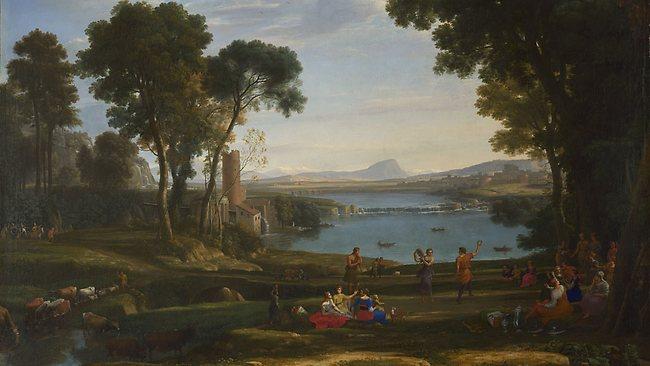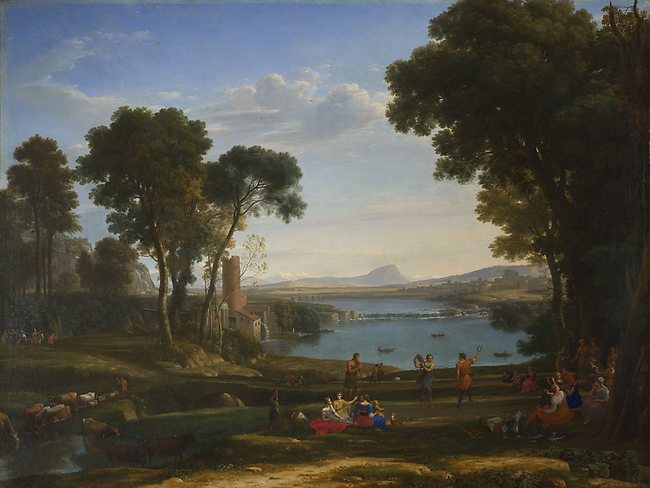Landscape with a pair of giants
CLAUDE Lorrain and J. M. W. Turner defined what the genre could be.

CLAUDE Lorrain established landscape painting as an indisputably great genre in 17th-century Rome, and his works have been highly prized ever since.
There has been, however, a particular renewal of interest in the course of the past decade, starting with an important exhibition held in 2007 at the British Museum and National Gallery in Washington: The Painter as Draughtsman. Two further monographic exhibitions, which I reviewed in this paper a few weeks ago, were mounted last year: Claude Lorrain, which began at the Louvre and moved to the Teylers Museum in Haarlem and Claude Lorrain: The Enchanted Landscape, which began at the Ashmolean Museum in Oxford in October last year and is still running at the Staedel in Frankfurt.
In 2009 Claude was also a central part of Turner and the Masters at the Tate, and perhaps it was the success of this exhibition that prompted the National Gallery in London to mount a full-scale show, Turner Inspired: In the Light of Claude, devoted to J. M. W. Turner's fascination with his great forebear. I have not yet had the opportunity to see this exhibition, but judging by the beautiful and scholarly catalogue it is one not to miss if you happen to be in London during the northern spring.
Turner's admiration for Claude is well known and apparent even to casual visitors to the National Gallery, for he left two paintings to that institution on condition they be displayed with a pair of pictures by Claude. Indeed, he was quite specific, naming two particularly famous Claudes in his 1829 will and modifying one of his own pair in the revised testament of 1831: his own Dido Building Carthage and Sun Rising Through Vapour were to hang beside Claude's Landscape with the Marriage of Isaac and Rebecca and Seaport with the Embarkation of the Queen of Sheba. The works were first displayed in this way in 1852 and, following the disturbances of two world wars and changing curatorial fashion, were reunited in 1968 in Room 15, where they have remained since.
The details of Turner's bequest -- greatly enlarged by the codicil of 1848 -- and the complicated sequence of events that led to the present display of most of the work at the Tate, are recounted in one of the three valuable essays included in the catalogue.
Another deals with the reception of Claude's work in Britain during Turner's lifetime and shows how the already considerable number of his pictures in British collections by the middle of the 18th century was greatly augmented by sales that followed the French Revolution (by 1820, it seems that more than half of his production of 300 paintings was in British hands).
It was a period when enthusiasm for Claude's paintings was fortuitously matched by the financial resources to acquire those that came on to the market.
But how available to the public were pictures still essentially bought for great private houses or stately homes far away in the country? It appears that auction exhibitions were an important opportunity for a wider public to see the paintings brought from France and elsewhere.
The British Institution, too, played an important part in making work accessible, especially to artists, art students and connoisseurs, by holding loan exhibitions of masterpieces in private collections, including many works by Claude.
The first public art museum in England was the Dulwich Picture Gallery, opened in 1817, and finally the National Gallery was inaugurated in temporary accommodation in 1824.
Turner's original bequest was thus conceived only five years into the national collection's existence. This promptness is significant: even before the 1848 codicil added a vast number of other pictures, the original bequest was already intended to cement his place in the history of art, and the stipulation to match two of his own works with two of Claude's was at once a homage to the greatest of landscape painters and an assertion of his achievement in emulating his model, including -- as the choice of Sun Rising Through Vapour suggests -- in the translation of the Claudian vision into a northern setting.
Turner's relation to Claude is the subject of a third essay by the exhibition's curator, Ian Warrell, and of the shorter introductions to the subsequent sections. It is an intriguing relationship, compounded of the highest veneration for transcendent achievement and what Warrell calls "a more primal, essentially Oedipal desire to surpass and remake the Claudian legacy in his own image". In this latter respect it was perhaps even more complex than Rubens's earlier relation to Titian, another case of lifelong imitation.
But Turner's case, like that of Rubens, demonstrates that the most intense study of a past model may also lead, contrary to present prejudices, to the most profound originality.
Turner Inspired: In the Light of Claude, is at the National Gallery, London, until June 5. Catalogue edited by Ian Warrell (London, National Gallery, distributed by Yale University Press).





